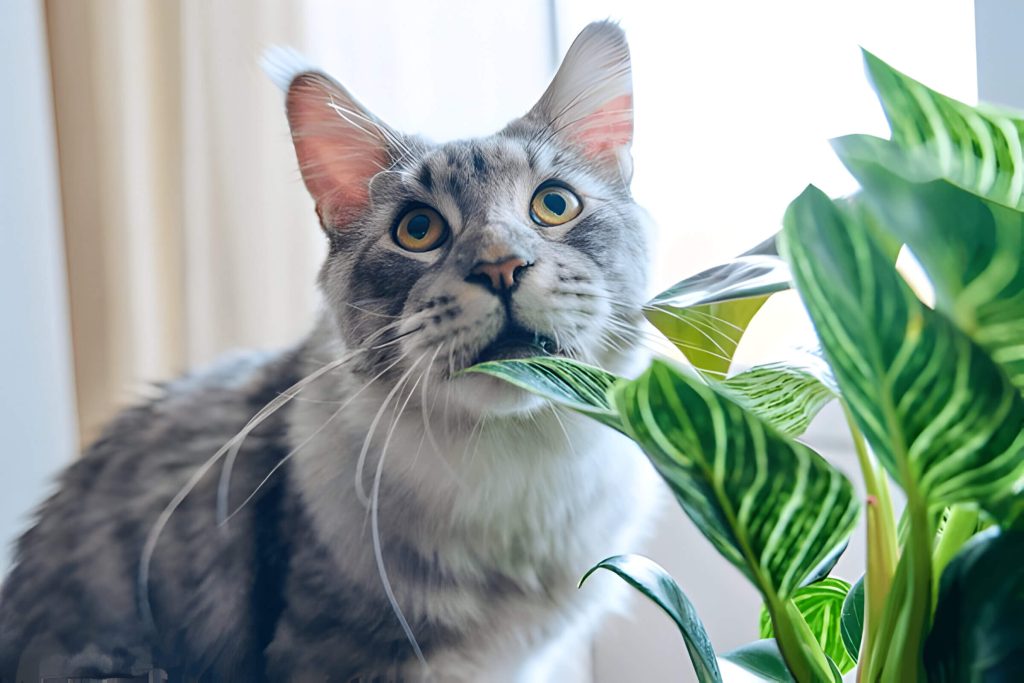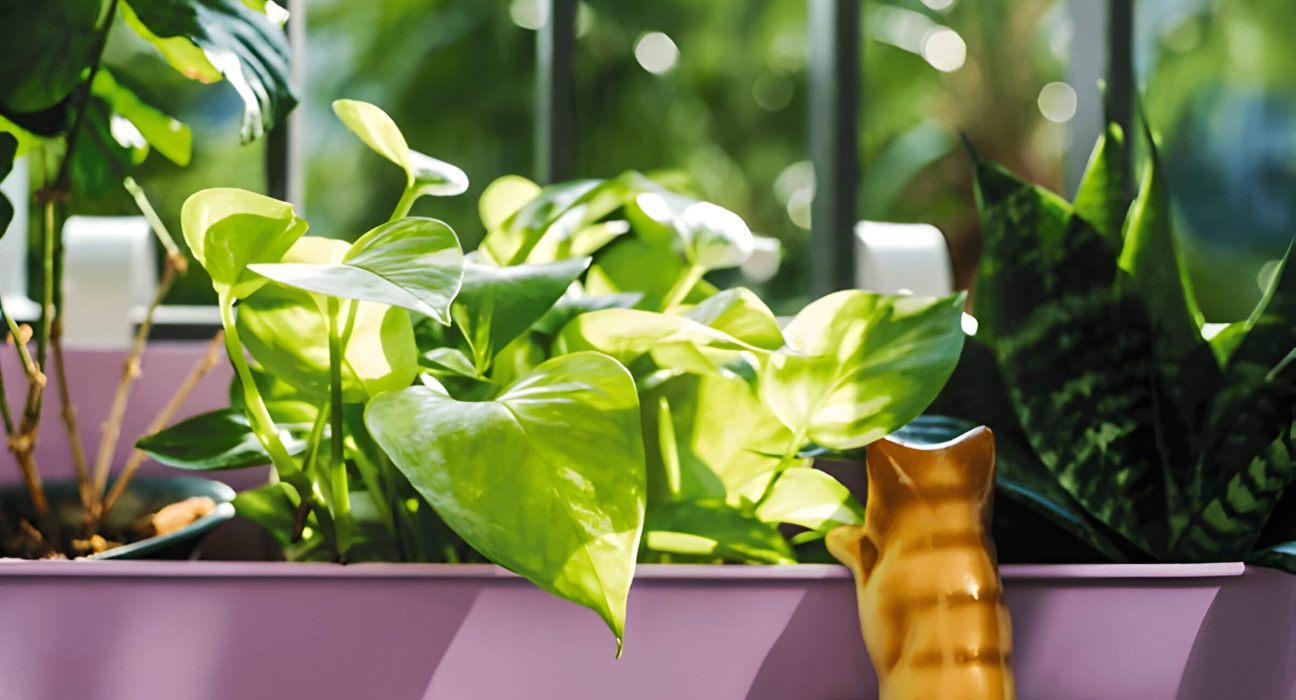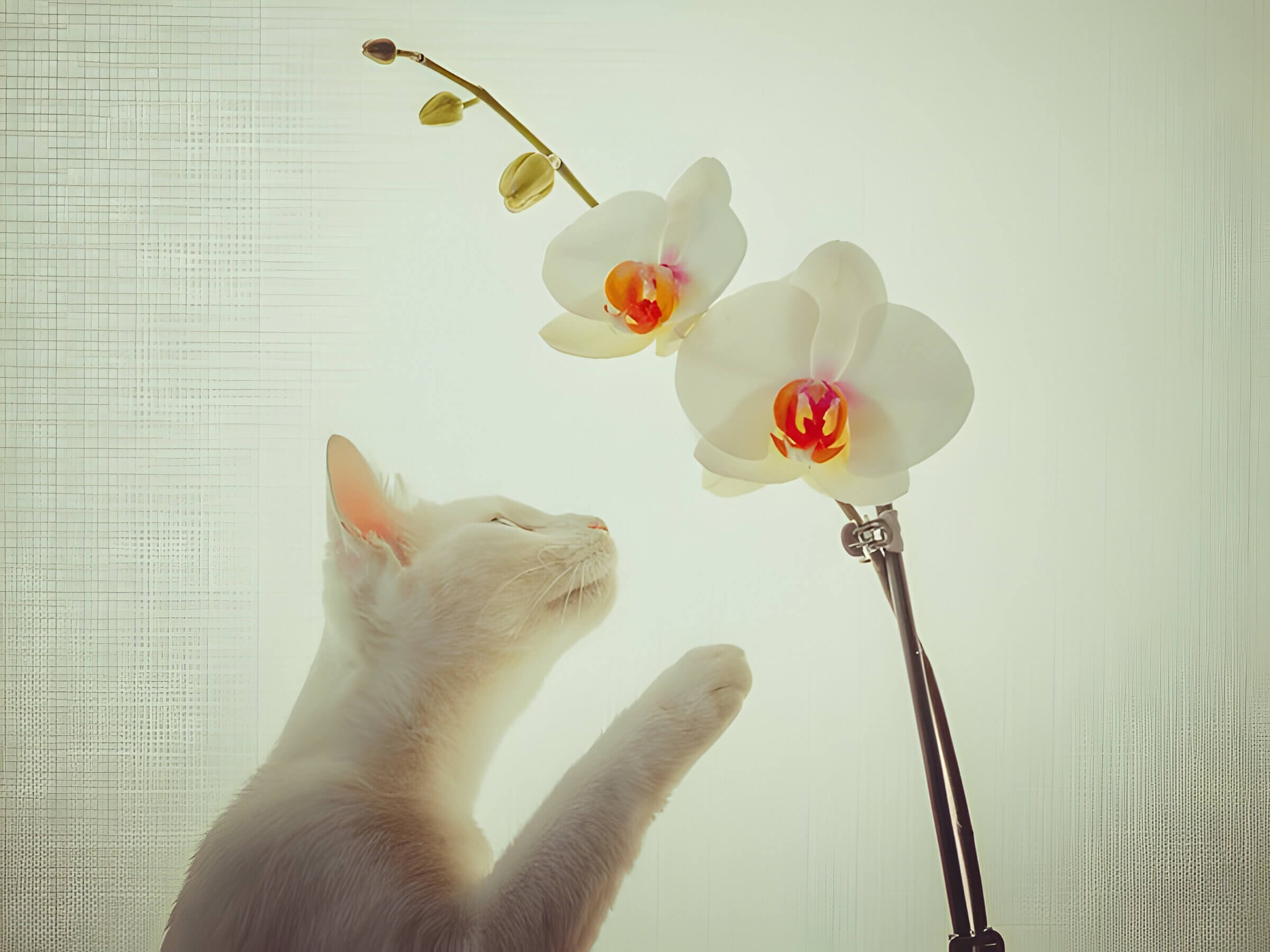Are pothos toxic to cats? Pothos, also known as Devil’s Ivy, is a popular houseplant cherished for its easy care and lush foliage. However, cat owners should be aware that this common indoor plant is toxic to felines. The leaves and stems of pothos contain calcium oxalate crystals, which can cause severe irritation and discomfort if ingested by cats.
When a cat chews on or consumes pothos, it may experience symptoms such as oral irritation, excessive drooling, difficulty swallowing, and vomiting. In more severe cases, the throat may swell, leading to breathing difficulties. It’s crucial for cat owners to recognize these signs and seek immediate veterinary care if they suspect their pet has come into contact with pothos.
To ensure the safety of your feline companions, it’s best to keep pothos and other cat-toxic plants out of reach or opt for cat-friendly alternatives. Consider hanging planters, closed terrariums, or dedicating a separate room for your houseplants to minimize the risk of accidental ingestion. Always research the toxicity of plants before bringing them into a home with cats, and consult with your veterinarian for a comprehensive list of safe and unsafe plants for your pets.
Identifying Pothos
Pothos, a popular indoor plant, is known for its ease of care and versatile appearance. To identify pothos in your home, look for heart-shaped leaves with a glossy texture. The most common varieties include Golden Pothos, featuring green leaves with yellow variegation, and Marble Queen Pothos, displaying a mix of green and white coloration.
When identifying pothos, pay attention to its trailing vines, which can grow several feet long. The leaves are typically 2-4 inches in length and alternate along the stem. Another distinguishing feature is the plant’s aerial roots, visible along the vine, which allow it to climb or attach to surfaces.
While pothos shares similarities with other trailing plants, its unique leaf shape and growth pattern set it apart. If you’re unsure about your indoor plant identification, compare your specimen to images of common pothos varieties online or consult a local nursery for expert advice.
Symptoms of Pothos Poisoning in Cats
Pothos poisoning in cats can lead to several concerning symptoms that pet owners should be aware of. The most common signs of plant toxicity from pothos ingestion include excessive drooling, difficulty swallowing, and oral irritation. Cats may also experience vomiting, loss of appetite, and pawing at their mouths due to discomfort.
In more severe cases, feline health concerns may escalate to include difficulty breathing, swelling of the throat and tongue, and even seizures. Pet owners should watch for signs of lethargy, depression, or changes in behavior, which could indicate pothos ingestion effects.
It’s crucial to note that symptoms can vary in intensity depending on the amount of plant material consumed. If you suspect your cat has ingested pothos or is displaying any of these cat poisoning symptoms, it’s essential to contact your veterinarian immediately for proper guidance and treatment.
What to Do If Your Cat Eats Pothos

If your cat has ingested pothos, it’s crucial to act quickly. Pothos is toxic to cats and can cause various symptoms, ranging from mild to severe. First, remove any remaining plant material from your cat’s mouth and surrounding area. Monitor your cat closely for signs of distress, such as drooling, vomiting, difficulty swallowing, or lethargy.
Contact your veterinarian or an emergency veterinary clinic immediately for professional advice. They may recommend bringing your cat in for examination or suggest at-home monitoring, depending on the amount ingested and your cat’s symptoms. In some cases, they might advise inducing vomiting, but never do this without professional guidance.
While waiting for veterinary care, you can contact a pet poison control hotline for additional support. These services can provide valuable information about the toxicity level and potential treatments.
If your cat shows severe symptoms or you’re unable to reach a vet quickly, consider administering first aid. This may include rinsing your cat’s mouth with water to remove any remaining plant particles. However, be cautious not to cause choking or additional stress.
Remember, prompt action and professional care are key in treating plant poisoning in cats. Always keep potentially harmful plants out of your cat’s reach to prevent future incidents.
Preventing Pothos Poisoning (Tips for Cat Owners)
Cat-proofing your home is essential when you have pothos plants, as these popular houseplants can be toxic to felines. To prevent pothos poisoning, start by strategically placing your plants out of your cat’s reach. Consider hanging baskets, high shelves, or enclosed terrariums to keep curious paws at bay.
Creating a physical barrier around pothos plants can also be effective. Use plant stands with wide bases to discourage jumping, or place aluminum foil or double-sided tape around the pot’s rim to deter cats from approaching.
Deterring cats from houseplants can be achieved through natural methods. Sprinkle coffee grounds or citrus peels around the plant’s base, as cats dislike these scents. Alternatively, use commercial pet repellent sprays designed specifically for plants.
For persistent felines, consider offering safe alternatives like cat grass or catnip to redirect their attention. This can satisfy their plant-chewing instincts without risking their health.
Lastly, educate yourself on safe plant options for cat-friendly homes. Many beautiful, non-toxic alternatives can provide the same aesthetic appeal as pothos without posing a threat to your feline companions.







